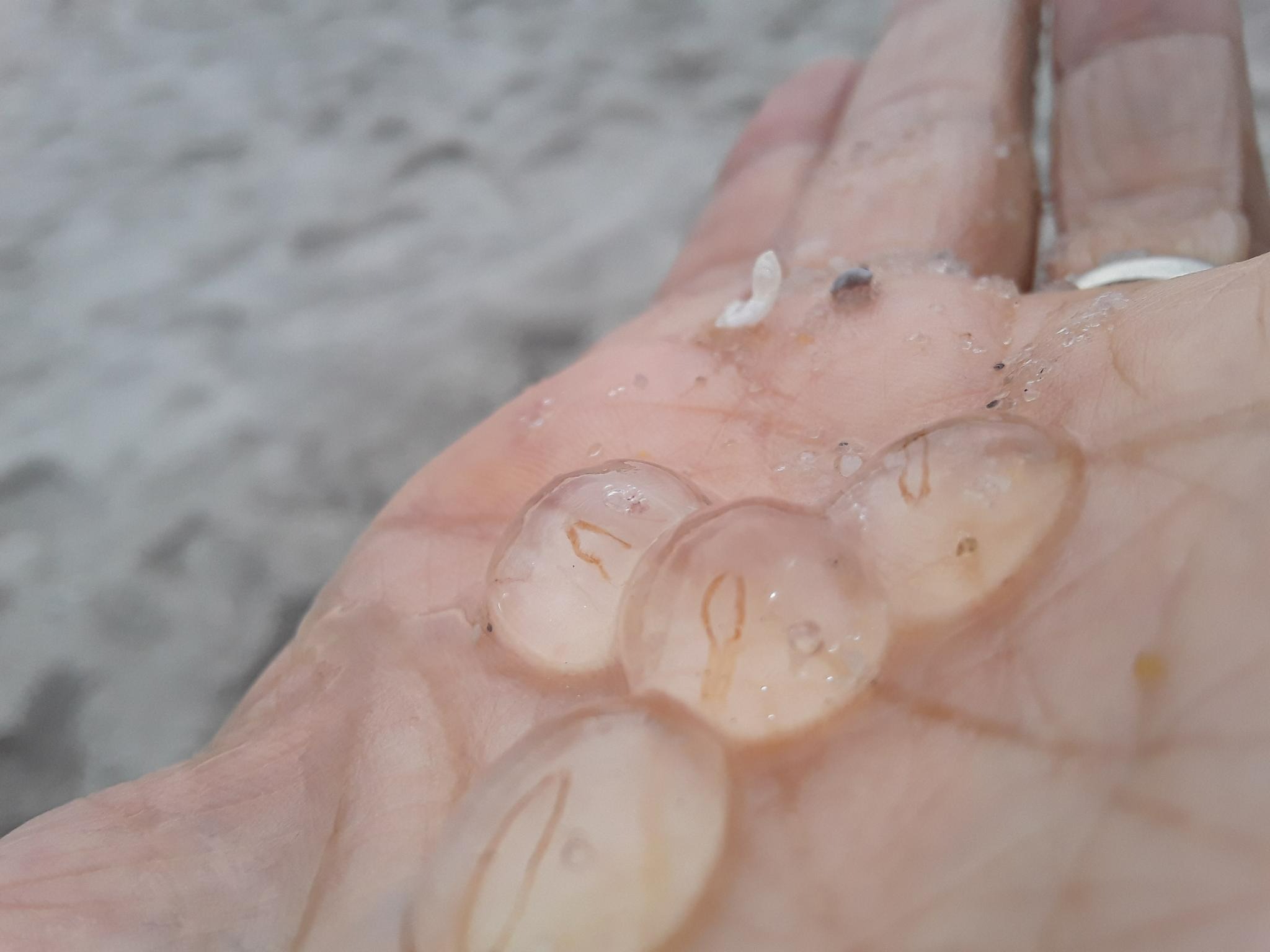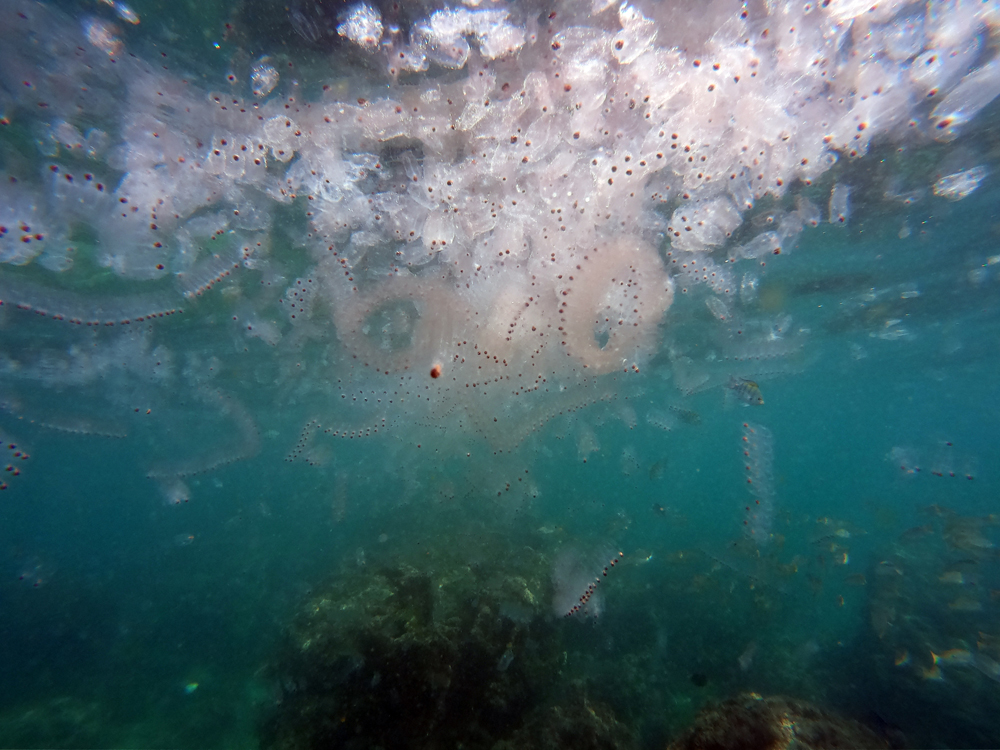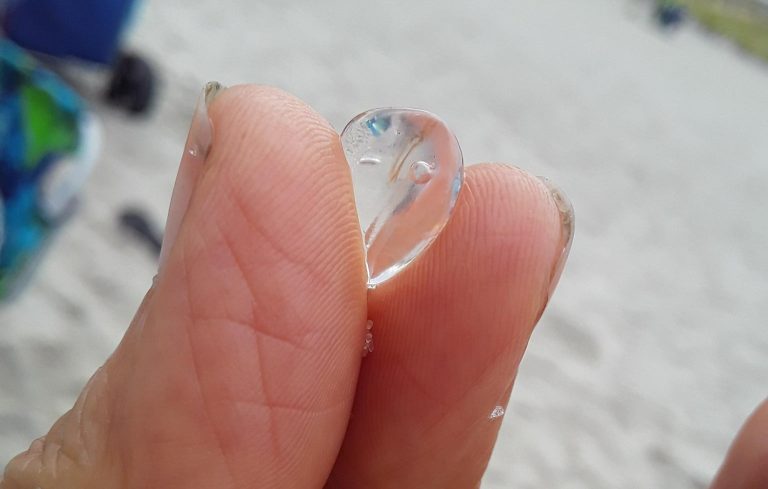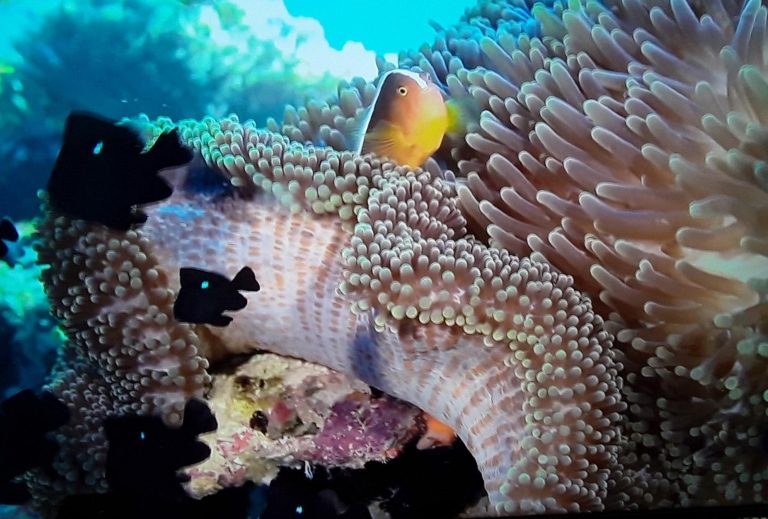If you’re lucky enough to have been to the shore lately, you may have encountered some — or even a multitude — of odd gelatinous globs on the beach. At first glance they might appear to be bits of jellyfish, broken up in the surf, or perhaps the eggs of some sea creature. They are neither. Let us introduce you to salps, a fast-growing and important, yet under-appreciated marine chordate.
Salps (salpae), also known as sea salps, or even “sea grapes,” are ancient, fascinating and useful creatures that — despite your perhaps never having seen or heard of them before — are abundant in every ocean except the Arctic. There are between 40 and 50 known species, with individuals ranging in size from a half inch to one foot in length. Salps have inhabited our oceans for 800 million years.
What are salps
Despite their jelly-like appearance, salps are not related to jellyfish (phylum cnidaria). These zooplankton are classified in the phylum chordata, because, in their juvenile form, salps have a primitive backbone (notochord) dorsal nerve cord and brain.

Like humans, salps have complex circulatory, digestive and nervous systems.
Unlike most chordates, however, salps are invertebrates, belonging to the suborder Tunicata. They are free-swimming marine animals that use jet propulsion both to move and to eat, pumping water through their contracting gelatinous bodies equipped with internal filters.
What do salps eat?
Success
You are now signed up for our newsletter
Success
Check your email to complete sign up
Salps consume whatever is in the water that passes through them — including everything from microscopic bacteria and phytoplankton to larvae. In a study by the Woods Hole Oceanographic Institute (WHOI) it was discovered that a surprising 80 percent of what salps consume is tiny particles much smaller that what could pass through their filter membranes.
Scientists found that because the nets are made of sticky mucus membranes, they are capable of capturing particles even more miniscule than the 1.5 micron holes in their filter system.

While salps are common in every ocean except for the Arctic, they are most abundant in the Southern Ocean, where swarms can generate a salp population that exceeds that of krill. The reason we seldom see salps is that they live out in the open ocean, often in deep water, where bacteria and phytoplankton are the most common food source.
When food is abundant, however, these opportunistic creatures will multiply by cloning, forming long chains of up to 900 replicas, collectively forming a “salp swarm.” In times of an algae bloom, for instance, a salp swarm can cover an area of about 40,000 square miles, with a density of salps surpassing 5,000 individuals per cubic yard.
Salps are some of the most efficient filter-feeders in the ocean. They help maintain an ecological balance by controlling phytoplankton blooms, and can live for up to three months before becoming food for other creatures or turning up on the beaches for us to marvel at.
How do salps work?
Salps in a chain community function as one large — up to 45 foot long — organism, with individual salps specializing to take on the various separate responsibilities of movement, feeding and reproduction. They are capable of synchronizing their movement to enable speedy escapes, but normally the individuals swim at their own pace, resulting in greater endurance — if not speed — for the chain.
Increasing their body length at a remarkable rate of 10 percent per hour, salps are believed to be the world’s fastest growing multicellular animal.
The life cycle of this simple creature is fairly complicated. Salps alternate generations in solitary and aggregate form. The solitary salp, or “oozooid,” reproduces asexually by cloning to form a chain. The clonal members of an aggregate chain, “blastozooids,” are sequential hermaphrodites. Maturing first as females, they reproduce sexually after being fertilized by males (the next level of maturity) from older chains. The result is new solitary oozoids, completing the cycle.
Some salp species use bioluminescence to communicate and or to attract prey. Generating a glow that can be seen for many yards, salps are some of the most brightly luminescent sea creatures.
How are salps useful?
Other than reproducing, salps mainly go about their business of filtering the ocean to obtain food. They do not sting or bite; but they do provide a valuable food source for hundreds of other marine species, including birds, fish, turtles and shellfish. In addition, their fecal pellets provide nutrition for the vast array of bottom feeders. The excrement and dead salp bodies that sink from a single swarm can sustain a seafloor community for months.
Salps’ fecal pellets play another important role by capturing carbon. Since their diet consists largely of phytoplankton, which consume carbon dioxide in the process of photosynthesis; salps produce dense, carbon-packed, fecal pellets that readily sink to the ocean floor. With carbon removed from the surface, the ocean is able to absorb more carbon dioxide from the atmosphere.

A harmless nuisance, or not
Because of their sticky nature, it can be a nuisance to encounter living salps. They can get in your hair or cling to a fishing line, clogging reels and guides. Dead salps that wash up on the beach lose their stickiness, and can be handled without risk.
What do you do if you get salps in your hair? Salps will cling to it as long as it is wet, so trying to wash them out will only make it worse. The best way to remove them is to let your hair dry. Once it is dry you should be able to comb them out with relative ease.
It should be noted, however, that swimming with salps has been described as a pleasant experience, somewhat akin to swimming with marshmallows, or in tapioca pudding.
















